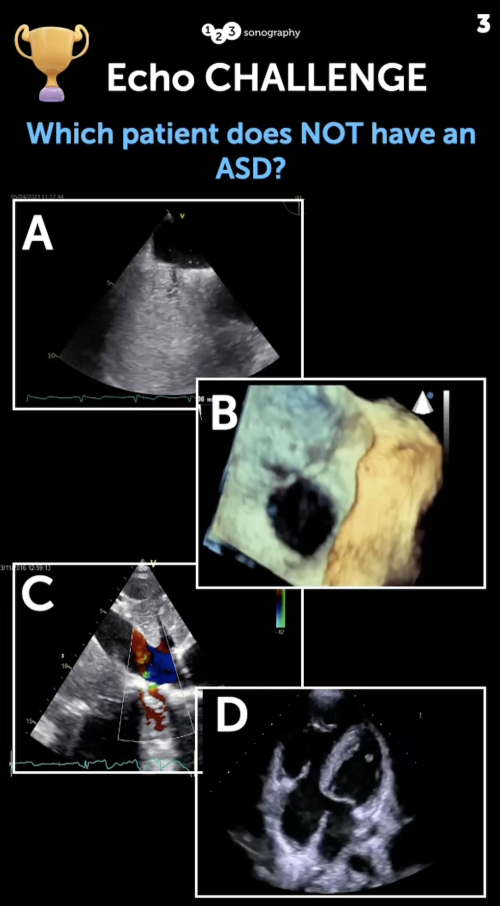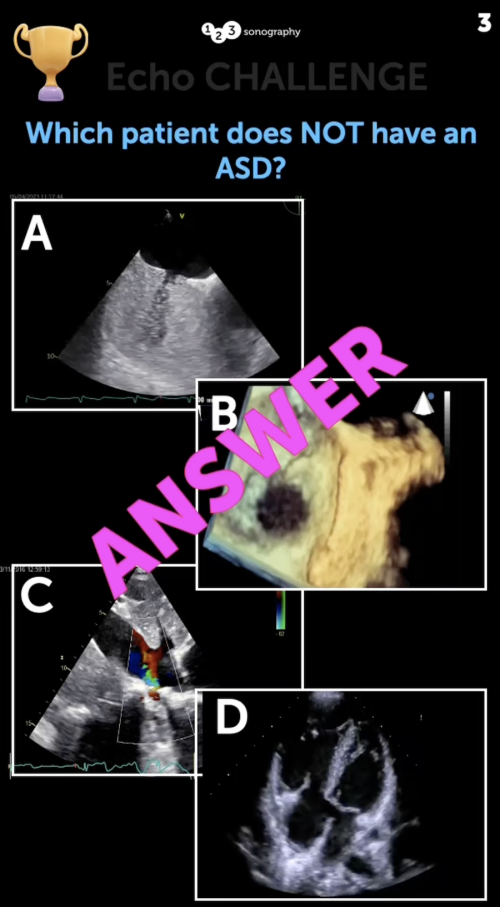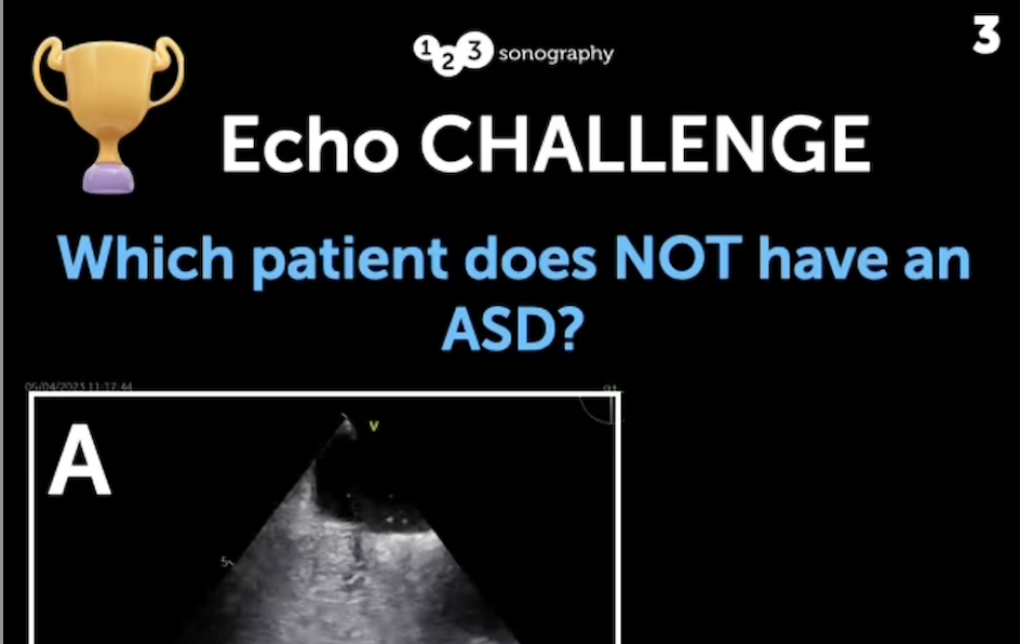Echo Challenge: Which patient does NOT have an atrial septal defect?
Today, we have a challenge for you! Look at these loops – can you tell which of these patients does not have an atrial septal defect (ASD)?

There are many findings that that point to an ASD!
Atrial septal defects (ASDs) are common congenital heart anomalies that can be identified using various echocardiographic techniques. Transesophageal echocardiography (TEE) with contrast, 3D imaging, and standard 2D views can all provide valuable insights into the presence, morphology and type of an ASD.
Answer to this case!
A TEE contrast study revealing a washout phenomenon strongly suggests an ASD with right-to-left shunting. Similarly, a 3D image of the interatrial septum displaying a large defect confirms the presence of an ASD. A 4-chamber 2D view showing a large primum ASD as part of an atrioventricular (AV) canal defect also supports the diagnosis. However, Scimitar syndrome, characterized by anomalous pulmonary venous drainage, is not an ASD, even though it may present with left-to-right shunting. Distinguishing between these conditions is essential for appropriate diagnosis and management. Check the correct answer in our video!

Want to learn more about how to find answers to these questions easily? Our Adult Congenital Heart Disease BachelorClass will teach you all about diagnosing "common" and "simple" congenital heart defects. Right now, we offer you 40% off our course: Check out the offer here!



